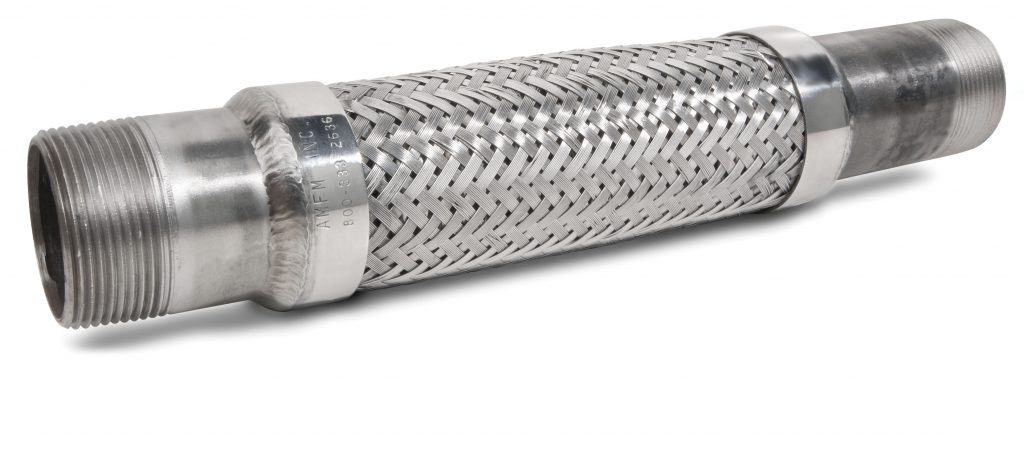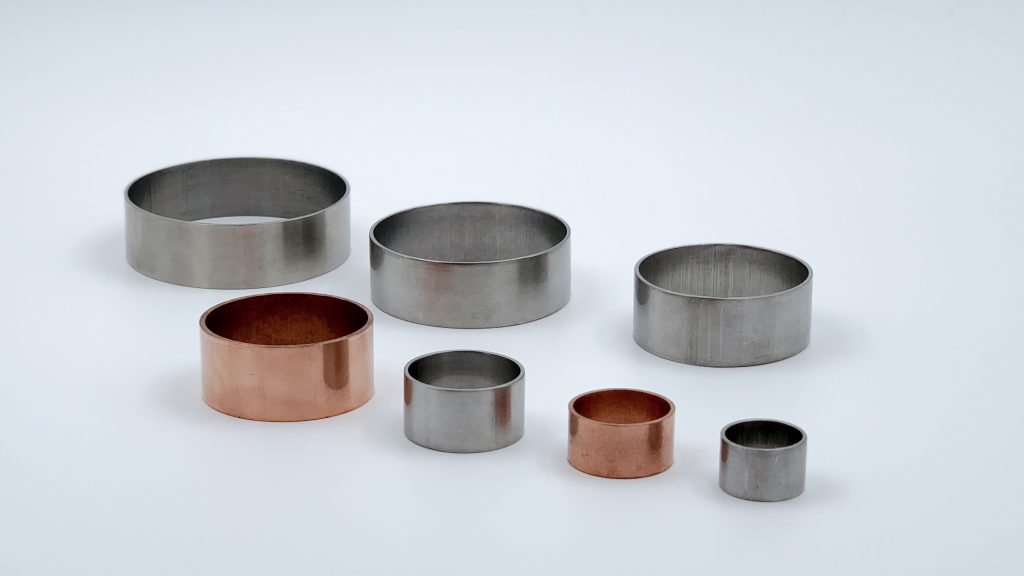Braid bands, also referred to as braid sleeves or braid ferrules, are used to secure woven braided sleeves that cover corrugated metal hoses. The braided sleeve provides strength to the corrugated metal hose, and also protects the hose from abrasion. The AMFM Braid Band retains the braided sleeve against the hose and allows the two parts to be welded together.
Understanding the sizing process for AMFM Braid Bands is a crucial step in selecting and ordering the right parts. Today, we’ll walk you through the steps to correctly sizing your brand bands.

About AMFM Braid Bands
The AMFM Braid Band was designed to accommodate the variable factors in hose fabrication. It is a solid band manufactured for 3/16” through 2” hose sizes. Braid Band (ID) sizes are manufactured in 0.150” increments from .420” through 3”. The AMFM Braid Band is primarily manufactured from 304 Stainless Steel, with availability in 316 Stainless Steel, Copper and Monel.
The incremental sizing allows the fabricator to select the best width based on the OD of the hose and type of braided hose covering selected. OD of hose and braid can vary by manufacturer. The use of standard braid, double braid and/or braided braid sleeve all influence which AMFM Braid Band works the best.
Standard and non-standard variants of the AMFM Braid Band are available. The AMFM Braid Band can be manufactured to serve your specifications for any application.
Braid Band Features to Consider
ID (Inside Diameter): Manufactured in a variety of sizes to accommodate a range of hose sizes and configurations
Material Type: 304 Stainless Steel is standard, additional material types 316 Stainless Steel, Copper and Monel are also available.
Width: AMFM Braid Bands carry standard widths, by band series, with non-standard widths available to suit your needs.
Thickness: Wall or thickness of band is determined by band series, increasing with size (ID).
Branding: AMFM Braid bands fit over hose and can be permanently imprinted to reflect critical information for your hose assembly.

Sizing AMFM Braid Bands
AMFM Braid Bands must be sized for each individual hose and configuration. AMFM Braid Bands are manufactured to “fit size” as determined by the OD of the hose, braid and is dependent on type of and configuration of hose braid.
The AMFM sizing gauge was developed exclusively for use with the braided metal hose to indicate the appropriate AMFM Braid Band needed. Selecting the size from catalog dimensions from the hose manufacturer or measuring the hose without consulting the factory is not recommended. More than one standard size increment will fit a braided hose with nominal difference, except in smaller hose sizes (under 1”). Double braid hoses generally require the equivalent increase of approximately three standard sizes over the single braid size.
AMFM Braid Bands offer consistency in manufacturing and out tolerances may exceed that of the hose. This may require alternate bands when a very tight fit is used that leaves no ability to consume a minor increase in hose diameter.
There are two methods of specification for AMFM Braid Bands
AMFM Standard Specification – Designated by AMFM Braid Band specification.
Customer Part Number Control – Determined by customer specification Contact us to learn more
Parts Characteristics
Out of Round
Specific tolerances are established for each series of braid bands. These standards are set to ensure each braid band is manufactured to the exact fit size. This ensures that each braid band fits properly on your hose.
Edge Protrusion
Edge protrusion refers to general edge condition, relating to any ID or OD burr. Variations are measured at a single point deformation or burr.
Edge Variation Edge (Parallel and Square)
With reference perpendicular to ID, part edge variations can deviate in parallel, part square, or basic material irregularities. Variations can involve a single edge or both. Specification calls for a maximum gap distance when measuring with reference to ID surface and corresponding perpendicular edge. Gap specifications vary from .010” to .040” depending on part size.
